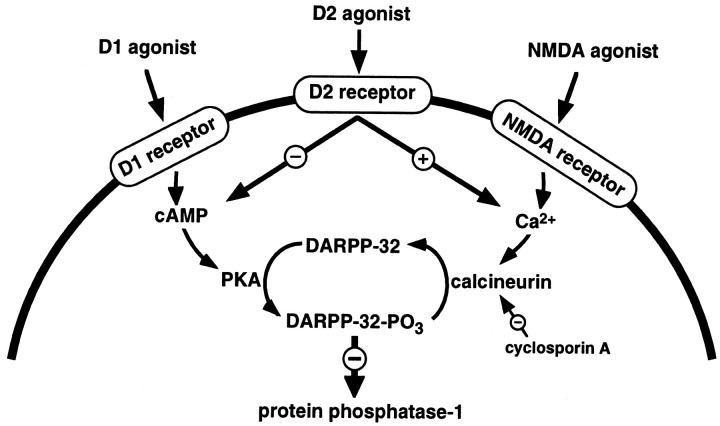Fig. 8.
Postulated pathways by which dopamine may regulate DARPP-32 phosphorylation. Activation of D1 receptors increases cAMP, leading to the activation of PKA and the phosphorylation of DARPP-32 on thr34, converting it into a potent inhibitor of protein phosphatase-1. Activation of D2 receptors decreases DARPP-32 phosphorylation by two mechanisms (which might occur in the same or in different groups of neurons): one involves an inhibition of adenylyl cyclase, a decrease in cAMP, a decrease in activity of PKA and a decreased phosphorylation of DARPP-32; the other involves an increase in intracellular Ca2+, an activation of calcineurin, and an increased dephosphorylation of thr34-phospho-DARPP-32. This scheme is supported by evidence showing that NMDA receptor activation (Halpain et al., 1990) and thapsigargin (present study), both of which raise intracellular Ca2+, cause the dephosphorylation of thr34-phospho-DARPP-32.

